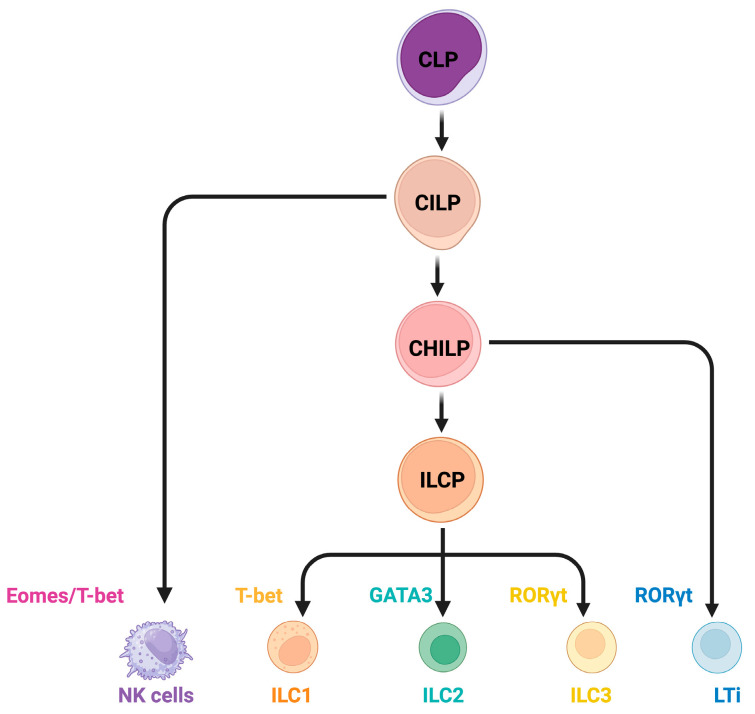Figure 1.
ILC classification and differentiation. In humans and mice, ILCs originate from lymphoid progenitors such as CLPs and LMPPs. Human CLPs initially emerge in the fetal liver before transitioning to the adult bone marrow as the primary site of development. ILC differentiation follows a well-defined hierarchical pathway. CLPs give rise to CILPs, which serve as the earliest precursors within the ILC lineage. CILPs can develop into functional NK cells. Alternatively, CILPs differentiate through the CHILP lineage, giving rise to ILCPs and LTiPs, which further mature into LTis. LTis play a critical role in lymphoid organogenesis, whereas ILCPs differentiate into ILC1s, ILC2s, and ILC3s with distinct functions. Abbreviations: CLP, common lymphoid progenitor; LMPP, lymphoid-primed multipotent progenitor; CILP, common innate lymphoid progenitor; CHILP, common helper-like innate lymphoid progenitor; ILCP, innate lymphoid cell precursor; LTiP, lymphoid tissue inducer progenitor; Eomes, eomesodermin; T-bet, T-box expressed in T cells; GATA3, GATA binding protein 3; RORγt, RAR-related orphan receptor gamma t. Created in BioRender. Cao, S. https://BioRender.com/be3izfi (accessed on 27 May 2025). Used with permission.

